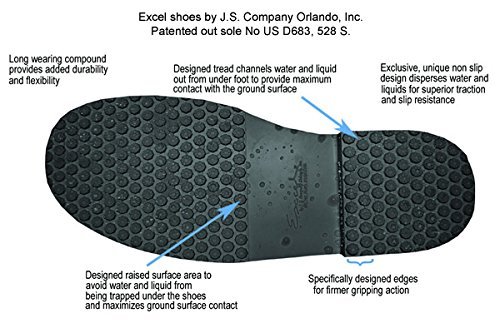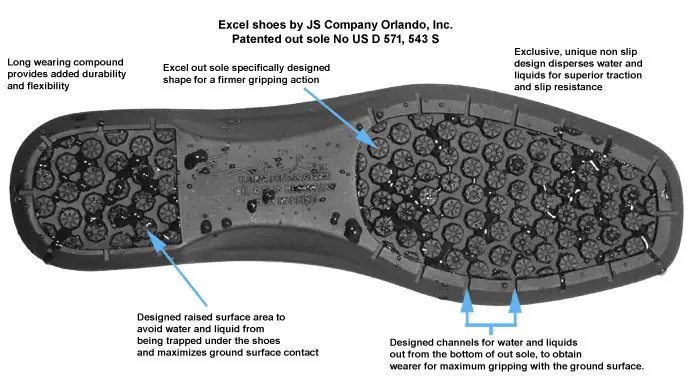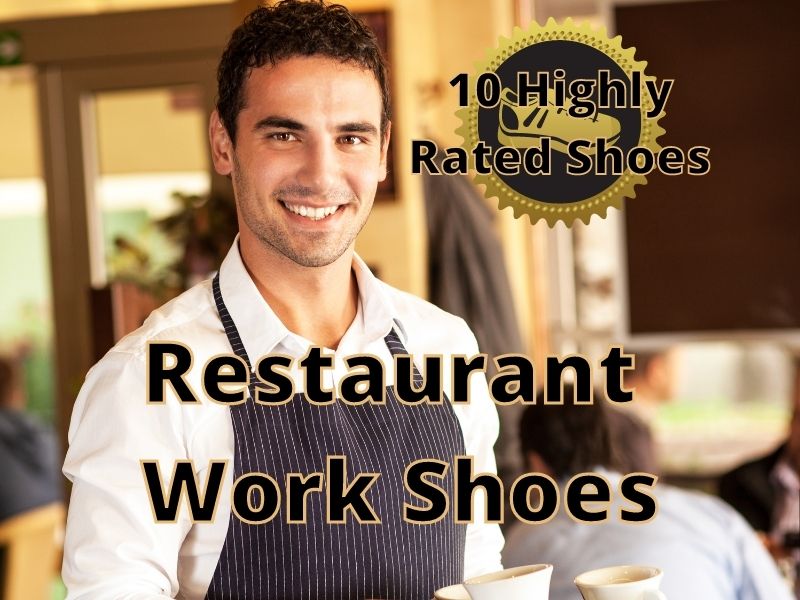Slipping into Danger: The Risks of Wearing the Wrong Shoes
In the fast-paced and hazardous environment of the restaurant industry, slips, trips, and falls are a constant threat. According to the Bureau of Labor Statistics, the restaurant industry experiences one of the highest rates of workplace accidents, with over 60,000 non-fatal injuries occurring annually. Slipping and falling can result in serious injuries, including broken bones, head trauma, and even fatalities. In fact, the National Institute for Occupational Safety and Health reports that slips, trips, and falls are the leading cause of workplace injuries, accounting for over 20% of all workplace accidents.
The consequences of slipping and falling can be devastating, not only for the individual but also for the restaurant as a whole. Lost productivity, medical expenses, and workers’ compensation claims can all take a significant toll on a restaurant’s bottom line. Furthermore, the emotional trauma and stress caused by a workplace accident can have long-lasting effects on employees’ well-being and job satisfaction. This is why it is essential for restaurant workers to wear non slip restaurant work shoes that are specifically designed to provide traction, support, and protection in hazardous work environments.
How to Choose the Right Non-Slip Shoes for Your Restaurant Job
Selecting the right non slip restaurant work shoes is crucial for ensuring safety and comfort in the workplace. With so many options available, it can be overwhelming to choose the best shoes for your specific needs. To make an informed decision, consider the following factors: slip resistance, comfort, durability, and style.
Slip resistance is the most critical factor to consider when choosing non slip restaurant work shoes. Look for shoes with a high coefficient of friction, which measures the shoe’s ability to grip slippery surfaces. A higher coefficient of friction indicates better slip resistance. Additionally, consider shoes with specialized outsoles, such as those with deep treads or lugs, which can provide extra traction on slippery floors.
Comfort is also essential for restaurant workers who spend long hours on their feet. Look for shoes with cushioning, arch support, and breathable materials to reduce fatigue and discomfort. Consider shoes with adjustable features, such as laces or straps, to ensure a secure and comfortable fit.
Durability is another critical factor to consider. Non slip restaurant work shoes are subject to heavy wear and tear, so it’s essential to choose shoes that can withstand the demands of the job. Look for shoes made with high-quality materials, such as leather or synthetic materials, and consider shoes with reinforced toe caps and heel counters for added durability.
Finally, consider the style of the shoe. While functionality is essential, it’s also important to choose shoes that fit with your personal style and the dress code of your restaurant. Many non slip restaurant work shoes come in a variety of styles, from sleek and modern to classic and traditional.
Top Brands for Non-Slip Restaurant Work Shoes: A Review
When it comes to non slip restaurant work shoes, there are several top brands that stand out for their quality, comfort, and slip resistance. Here, we’ll review some of the most popular brands, including Dr. Martens, New Balance, and Skechers, highlighting their features and benefits.
Dr. Martens is a well-known brand in the footwear industry, and their non slip restaurant work shoes are a popular choice among restaurant workers. Their shoes feature a unique air-cushioned sole that provides excellent slip resistance, as well as a comfortable and breathable design. Dr. Martens non slip shoes are also known for their durability, making them a great investment for restaurant workers who need a reliable pair of shoes.
New Balance is another top brand that offers high-quality non slip restaurant work shoes. Their shoes feature a slip-resistant outsole made from a specialized rubber compound, as well as a comfortable and supportive design. New Balance non slip shoes are also known for their stylish designs, making them a great choice for restaurant workers who want to look good while staying safe.
Skechers is a popular brand among restaurant workers, and their non slip restaurant work shoes are a top choice. Their shoes feature a unique slip-resistant technology that provides excellent traction on slippery floors, as well as a comfortable and breathable design. Skechers non slip shoes are also known for their affordability, making them a great option for restaurant workers on a budget.
When choosing a brand of non slip restaurant work shoes, it’s essential to consider factors such as slip resistance, comfort, and durability. By choosing a high-quality brand like Dr. Martens, New Balance, or Skechers, restaurant workers can ensure they’re getting a reliable and effective pair of shoes that will keep them safe on the job.
The Anatomy of a Non-Slip Shoe: Understanding the Technology
Non slip restaurant work shoes are designed to provide traction and stability on slippery surfaces, but have you ever wondered what makes them so effective? The technology behind non slip shoes is rooted in the materials and design features that make them slip-resistant. In this section, we’ll delve into the anatomy of a non slip shoe and explore the key components that make them a vital part of restaurant workers’ safety gear.
One of the most critical components of a non slip shoe is the outsole, which is the bottom layer of the shoe that comes into contact with the floor. The outsole is typically made from a specialized rubber compound that provides excellent grip on slippery surfaces. This rubber compound is often formulated to be more flexible and durable than regular rubber, allowing it to conform to the shape of the floor and maintain traction even on wet or oily surfaces.
In addition to the outsole, the tread pattern of a non slip shoe is also crucial for providing traction. The tread pattern is the design of the grooves and lugs on the bottom of the shoe, which work together to channel liquids away from the foot and provide a secure grip on the floor. Different tread patterns are designed for specific types of surfaces, such as smooth floors or rough terrain.
Another key feature of non slip restaurant work shoes is the midsole, which is the layer of material between the outsole and the insole. The midsole provides additional cushioning and support for the foot, as well as helping to absorb shock and reduce fatigue. In non slip shoes, the midsole is often made from a lightweight, breathable material that allows for airflow and moisture wicking.
Finally, the upper material of a non slip shoe is also designed to provide comfort and support for the foot. The upper material is typically made from a breathable, moisture-wicking material such as mesh or synthetic materials, which helps to keep the foot cool and dry. The upper material may also feature additional features such as padding, arch support, and adjustable lacing systems to provide a secure and comfortable fit.
By understanding the technology behind non slip restaurant work shoes, restaurant workers can make informed decisions when selecting the right shoes for their job. Whether you’re a chef, server, or kitchen staff, non slip shoes are an essential part of your safety gear, and choosing the right pair can help you stay safe and confident on the job.
Comfort and Support: The Importance of Ergonomic Design
In addition to providing slip resistance, non slip restaurant work shoes must also prioritize comfort and support for the wearer. Ergonomic design is a crucial aspect of non slip shoes, as it can help reduce fatigue, prevent injuries, and improve overall performance on the job. In this section, we’ll explore the importance of ergonomic design in non slip restaurant work shoes and the key features that make them comfortable and supportive.
One of the most critical features of ergonomic design in non slip shoes is arch support. Arch support helps to redistribute the weight of the foot, reducing pressure on the heel and ball of the foot. This can help to prevent common foot problems such as plantar fasciitis and Achilles tendonitis, which are prevalent in the restaurant industry. Look for non slip shoes with a sturdy arch support system that provides adequate cushioning and stability.
Cushioning is another essential feature of ergonomic design in non slip shoes. Cushioning helps to absorb shock and reduce the impact of each step, which can help to reduce fatigue and discomfort. Look for non slip shoes with thick, responsive midsoles that provide excellent cushioning and support.
Breathable materials are also a key aspect of ergonomic design in non slip shoes. Breathable materials such as mesh panels and perforations help to keep the foot cool and dry, reducing the risk of blisters and discomfort. Look for non slip shoes with breathable materials that allow for airflow and moisture wicking.
Finally, ergonomic design in non slip shoes must also consider the overall fit and comfort of the shoe. Look for non slip shoes with adjustable lacing systems, padded collars, and soft, breathable linings that provide a comfortable and secure fit. A comfortable fit can help to reduce distractions and improve focus on the job, which is critical in the fast-paced restaurant industry.
By prioritizing comfort and support, non slip restaurant work shoes can help to improve the overall well-being and performance of restaurant workers. Whether you’re a chef, server, or kitchen staff, ergonomic design is a critical aspect of non slip shoes that can help you stay safe, comfortable, and focused on the job.
Slip-Resistant vs. Slip-Proof: What’s the Difference?
When it comes to non slip restaurant work shoes, it’s essential to understand the difference between slip-resistant and slip-proof shoes. While both types of shoes are designed to provide traction on slippery surfaces, they have distinct differences in terms of their performance and suitability for specific job roles.
Slip-resistant shoes are designed to provide a high level of traction on slippery surfaces, but they are not foolproof. They are typically made with specialized rubber compounds and tread patterns that help to grip the floor, but they may not provide complete protection against slipping and falling. Slip-resistant shoes are suitable for most restaurant job roles, including chefs, servers, and kitchen staff, and are a good option for general-purpose use.
Slip-proof shoes, on the other hand, are designed to provide an extremely high level of traction and are often used in high-risk environments such as oil rigs, construction sites, and industrial kitchens. Slip-proof shoes are typically made with advanced materials and design features that provide unparalleled grip and stability, even on extremely slippery surfaces. Slip-proof shoes are often more expensive than slip-resistant shoes and are typically reserved for high-risk job roles or environments.
When selecting non slip restaurant work shoes, it’s essential to consider the level of slip resistance required for your specific job role. If you work in a high-risk environment or are required to work on extremely slippery surfaces, slip-proof shoes may be the best option. However, for most restaurant job roles, slip-resistant shoes provide an adequate level of protection and are a more affordable option.
In addition to understanding the difference between slip-resistant and slip-proof shoes, it’s also essential to consider the types of surfaces you will be working on. Non slip restaurant work shoes are designed to provide traction on a variety of surfaces, including tile, wood, and concrete. However, some shoes may be more suitable for specific surfaces than others. For example, shoes with a more aggressive tread pattern may be better suited for outdoor or rough surfaces, while shoes with a smoother tread pattern may be better suited for indoor or smooth surfaces.
By understanding the difference between slip-resistant and slip-proof shoes, as well as the types of surfaces you will be working on, you can make an informed decision when selecting non slip restaurant work shoes for your job role.
Restaurant Work Shoes for Specific Job Roles: A Guide
Selecting the right non slip restaurant work shoes for your specific job role can be a daunting task, especially with the numerous options available in the market. However, understanding the unique demands and requirements of each job role can help you make an informed decision. In this section, we’ll provide guidance on selecting non slip shoes for specific job roles in the restaurant industry, including chefs, servers, and kitchen staff.
Chefs and kitchen staff require non slip restaurant work shoes that provide excellent slip resistance, comfort, and durability. They often work in high-pressure environments with hot surfaces, greasy floors, and heavy foot traffic. Look for shoes with advanced slip-resistant technology, such as rubber compounds and tread patterns, that can provide traction on slippery surfaces. Additionally, chefs and kitchen staff may benefit from shoes with breathable materials, cushioning, and arch support to reduce fatigue and discomfort.
Servers and bartenders, on the other hand, require non slip restaurant work shoes that provide comfort, support, and style. They often work in fast-paced environments with frequent movements, and may need shoes that can keep up with their energetic pace. Look for shoes with lightweight materials, cushioning, and breathable materials that can provide comfort and support during long shifts. Servers and bartenders may also benefit from shoes with slip-resistant soles and stylish designs that can complement their uniforms.
Other job roles in the restaurant industry, such as dishwashers, janitorial staff, and delivery personnel, may require non slip restaurant work shoes that provide specific features and benefits. For example, dishwashers may require shoes with waterproof materials and slip-resistant soles, while janitorial staff may require shoes with advanced cleaning features and durability. Delivery personnel may require shoes with comfort, support, and slip resistance, as well as features such as insulation and waterproofing.
When selecting non slip restaurant work shoes for your specific job role, consider the unique demands and requirements of your job. Think about the types of surfaces you’ll be working on, the frequency of movements, and the level of comfort and support you need. By understanding your specific needs, you can select non slip shoes that provide the right features and benefits for your job role, and help you stay safe and comfortable on the job.
Conclusion: Stepping into a Safer Workplace
In conclusion, non slip restaurant work shoes are a crucial component of a safe and healthy work environment in the restaurant industry. By understanding the hazards of slipping and falling, selecting the right non slip shoes for your job role, and prioritizing comfort and support, you can reduce the risk of workplace accidents and injuries. Remember, non slip restaurant work shoes are not just a necessity, but a vital investment in your safety and well-being.
As you step into your next shift, remember to prioritize your safety and comfort. Choose non slip restaurant work shoes that meet your specific needs, and don’t compromise on quality and performance. With the right shoes, you can focus on what matters most – providing excellent service to your customers and enjoying a safe and healthy work environment.
By following the guidelines and tips outlined in this article, you can make an informed decision when selecting non slip restaurant work shoes. Whether you’re a chef, server, or kitchen staff, remember that your safety and comfort are paramount. So, take the first step towards a safer workplace today, and invest in a pair of high-quality non slip restaurant work shoes.







